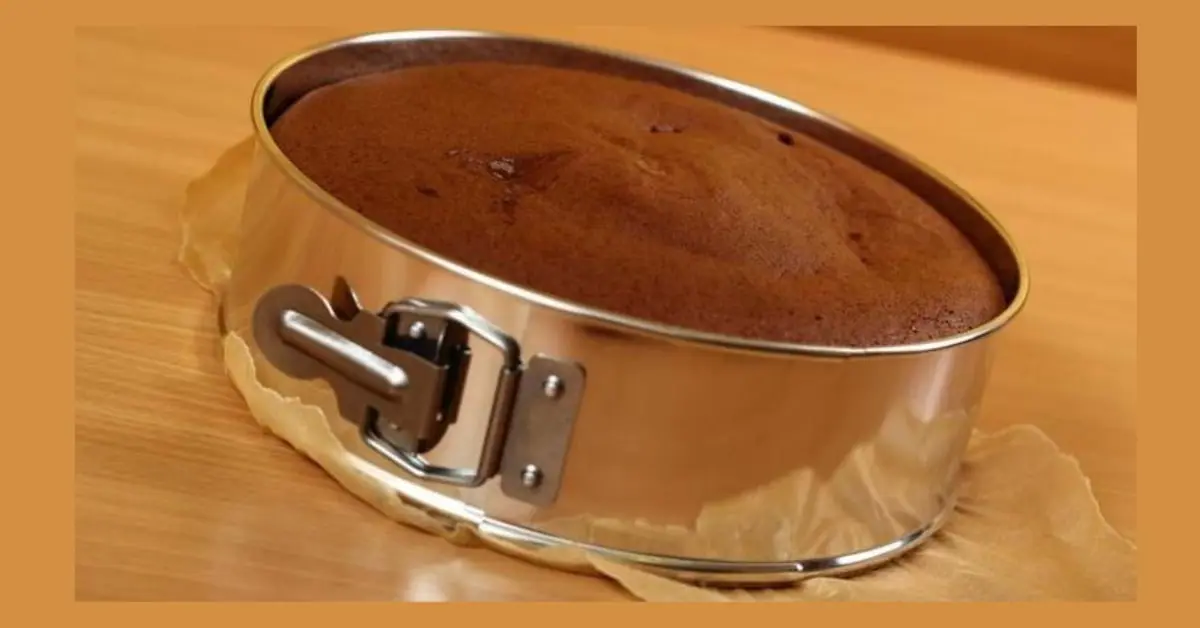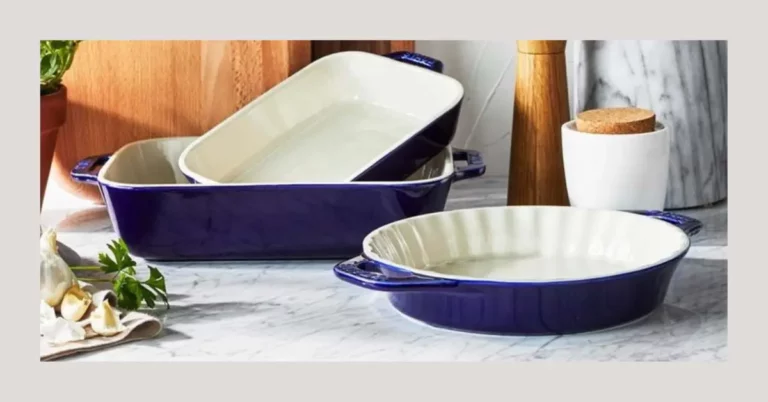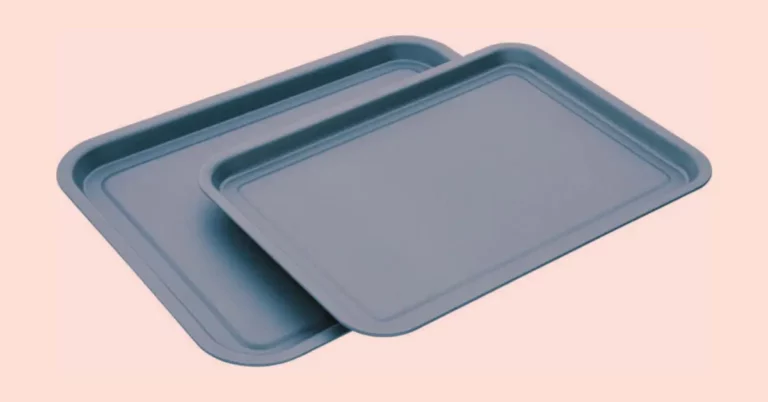Disclosure: As an Amazon associate, I may earn from qualifying purchases
In our previous article, we dove into the fascinating world of adjustable baking molds, with a focus on the versatile springform pans. In this post, we will be taking a deeper dive as we continue to unravel the mysteries and answer even more burning questions about these ingenious pans.
First and foremost, springform pans offer the ultimate convenience when it comes to removing delicate desserts from the pan. With their detachable sides and bottom, you can effortlessly release your culinary creations without the fear of them falling apart. Whether it’s a luscious cheesecake or a savory quiche, springform pans have your back.
One of the greatest joys of baking is sharing your delectable dishes with loved ones. And guess what? Springform pans make serving your desserts a breeze. Their removable sides allow for a stunning presentation and even better form.
Simply unlatch the spring, and your masterpiece is ready to be unveiled, showcasing perfectly smooth edges that rival those of professional bakeries.
Speaking of professional results, springform pans offer exceptional baking consistency. The even heat distribution provided by these pans ensures that your cakes, pies, and tarts are baked to perfection, with no soggy bottoms or overcooked edges. Instead of embarrassing baking mishaps, what you’ll have is a uniform, golden-brown crust that will have everyone reaching for seconds.
We also understand the dread of scrubbing off baked-on residue from pans. We have shared some efficient cleaning hacks to ensure that your springform pans sparkle like new after each use. You’ll be amazed at how effortless it can be to maintain the longevity and pristine appearance of these pans.
So, grab your aprons and let’s answer some bakers’ questions!
First and foremost, springform pans offer the ultimate convenience when it comes to removing delicate desserts from the pan. With their detachable sides and bottom, you can effortlessly release your culinary creations without the fear of them falling apart. Whether it’s a luscious cheesecake or a savory quiche, springform pans have your back.
One of the greatest joys of baking is sharing your delectable dishes with loved ones. And guess what? Springform pans make serving your desserts a breeze. Their removable sides allow for a stunning presentation and even better form.
Simply unlatch the spring, and your masterpiece is ready to be unveiled, showcasing perfectly smooth edges that rival those of professional bakeries.
Speaking of professional results, springform pans offer exceptional baking consistency. The even heat distribution provided by these pans ensures that your cakes, pies, and tarts are baked to perfection, with no soggy bottoms or overcooked edges. Instead of embarrassing baking mishaps, what you’ll have is a uniform, golden-brown crust that will have everyone reaching for seconds.
We also understand the dread of scrubbing off baked-on residue from pans. We have shared some efficient cleaning hacks to ensure that your springform pans sparkle like new after each use. You’ll be amazed at how effortless it can be to maintain the longevity and pristine appearance of these pans.
So, grab your aprons and let’s answer some bakers’ questions!
Frequently Asked Questions
When should you NOT use a parchment paper baking?
Parchment paper can be used for many baking purposes, but there are some situations when it is not recommended.
It is important to always follow the manufacturer’s instructions and take proper safety precautions when using parchment paper.
- When broiling: Parchment paper is not recommended for use when broiling as it can easily catch fire at high temperatures.
- When grilling: It is not recommended for use when grilling as it can easily catch fire due to the direct heat.
- When making meringues: Parchment paper can prevent meringues from sticking, but it may cause them to spread and lose their shape. A silicone mat or greased parchment paper may be a better option.
- When using a convection oven: Parchment paper may fly around in a convection oven due to the circulating air. It is better to use a heavier baking sheet or silicone mat.
It is important to always follow the manufacturer’s instructions and take proper safety precautions when using parchment paper.
How do you transfer a cake from a springform pan?
- Allow the cake to cool completely in the pan before attempting to remove it.
- Run a sharp knife around the edges of the cake to loosen it from the sides of the pan.
- Release the latch on the springform pan and carefully remove the sides.
- Place a large, flat plate or cake board on top of the cake and carefully flip the cake and the base of the pan over so that the cake is now resting on the plate or cake board.
- Carefully lift the base of the pan away from the cake.
- If the cake is sticking to the base of the pan, place a piece of parchment paper or wax paper over the cake and then flip the cake over again onto a serving platter.
Make sure to be gentle when transferring the cake so as not to damage the delicate texture of the cake.
Is it better to take a cake out of the pan when it's hot or cold?
It is generally better to wait until a cake has cooled before removing it from the pan. If the cake is still hot, it is more likely to fall apart or break when you try to remove it from the pan.
It is also possible that the cake may still be setting up and could be more fragile when it is hot. Allowing the cake to cool in the pan for a few minutes before removing it can help the cake set and become more stable.
Once the cake has cooled to room temperature, it should be easier to remove from the pan without damaging it.
It is also possible that the cake may still be setting up and could be more fragile when it is hot. Allowing the cake to cool in the pan for a few minutes before removing it can help the cake set and become more stable.
Once the cake has cooled to room temperature, it should be easier to remove from the pan without damaging it.
How long should a cake rest before removing from pan?
It’s generally recommended to allow a cake to cool in the pan for 10-15 minutes before attempting to remove it. This allows the cake to firm up slightly and become less fragile.
After that, you can run a knife around the edges of the pan to loosen the cake, and then invert the pan onto a cooling rack to remove the cake from the pan.
If you’re using a springform pan, you can release the sides of the pan and carefully remove them from the cake, then transfer the cake to a cooling rack.
Remember to handle the cake gently during this process to avoid any damage or cracking.
After that, you can run a knife around the edges of the pan to loosen the cake, and then invert the pan onto a cooling rack to remove the cake from the pan.
If you’re using a springform pan, you can release the sides of the pan and carefully remove them from the cake, then transfer the cake to a cooling rack.
Remember to handle the cake gently during this process to avoid any damage or cracking.
Why use a glass bottom springform pan?
A glass bottom springform pan allows you to see the bottom of the cake or dessert, which can be useful for presentation purposes.
Glass is also a good conductor of heat, which can result in even baking and browning. Glass pans are non-reactive, so they won’t affect the taste of acidic ingredients like citrus or vinegar.
However, glass pans can be more delicate than metal pans and may not be suitable for high-temperature baking.
Glass is also a good conductor of heat, which can result in even baking and browning. Glass pans are non-reactive, so they won’t affect the taste of acidic ingredients like citrus or vinegar.
However, glass pans can be more delicate than metal pans and may not be suitable for high-temperature baking.
What is the difference between a cheesecake pan and a springform pan?
A cheesecake pan and a springform pan are similar in that they are both designed for baking cheesecakes. However, there are some differences between the two.
A springform pan is a type of baking pan with a removable bottom and a latch on the side that releases the pan’s sides from the base. This makes it easy to remove the cake without having to invert or slide it out of the pan, which is especially useful for delicate cakes like cheesecakes.
Springform pans are usually round and come in various sizes.
A cheesecake pan is a type of baking pan that is specifically designed for baking cheesecakes. It is typically made of aluminum or steel and has straight sides with a removable bottom.
Unlike a springform pan, a cheesecake pan does not have a latch on the side to release the sides of the pan. Cheesecake pans come in various sizes and shapes, including round, square, and rectangular.
The main difference between a cheesecake pan and a springform pan is the way they are designed to release the cake. A cheesecake pan relies on the removable bottom to release the cake, while a springform pan uses a latch to release the sides.
A springform pan is a type of baking pan with a removable bottom and a latch on the side that releases the pan’s sides from the base. This makes it easy to remove the cake without having to invert or slide it out of the pan, which is especially useful for delicate cakes like cheesecakes.
Springform pans are usually round and come in various sizes.
A cheesecake pan is a type of baking pan that is specifically designed for baking cheesecakes. It is typically made of aluminum or steel and has straight sides with a removable bottom.
Unlike a springform pan, a cheesecake pan does not have a latch on the side to release the sides of the pan. Cheesecake pans come in various sizes and shapes, including round, square, and rectangular.
The main difference between a cheesecake pan and a springform pan is the way they are designed to release the cake. A cheesecake pan relies on the removable bottom to release the cake, while a springform pan uses a latch to release the sides.
What is the most common size springform pan for cheesecake?
The most common size for a springform pan used to make cheesecake is 9 inches in diameter and 3 inches deep.
Do you line a springform pan for cake?
Yes, you can line a springform pan for cake to make it easier to remove the cake from the pan. The most common way to line a springform pan is by placing a round piece of parchment paper at the bottom of the pan before assembling and locking it.
This will prevent the cake from sticking to the bottom of the pan and make it easier to slide off once it is done baking.
This will prevent the cake from sticking to the bottom of the pan and make it easier to slide off once it is done baking.
How long does it take to bake a cake in a springform pan?
The baking time for a cake in a springform pan will vary depending on the recipe and the size of the pan.
As a general rule, it is recommended to start checking for doneness about 10-15 minutes before the suggested baking time for a regular cake pan.
This is because springform pans tend to have a larger surface area and may bake the cake faster. You can test for doneness using a toothpick or cake tester inserted into the center of the cake to ensure that it is fully baked.
As a general rule, it is recommended to start checking for doneness about 10-15 minutes before the suggested baking time for a regular cake pan.
This is because springform pans tend to have a larger surface area and may bake the cake faster. You can test for doneness using a toothpick or cake tester inserted into the center of the cake to ensure that it is fully baked.
Can I use a 9x13 pan instead of a springform pan?
In most cases, you can use a 9×13 inch baking pan instead of a springform pan, but the end result may be slightly different.
A springform pan is typically used for recipes that require a delicate or fragile crust or when the final product needs to be removed from the pan without inverting it.
A 9×13 inch baking pan can be used for a variety of recipes, including cakes, brownies, bars, and casseroles. Keep in mind that the baking time and temperature may need to be adjusted when using a different type of pan.
A springform pan is typically used for recipes that require a delicate or fragile crust or when the final product needs to be removed from the pan without inverting it.
A 9×13 inch baking pan can be used for a variety of recipes, including cakes, brownies, bars, and casseroles. Keep in mind that the baking time and temperature may need to be adjusted when using a different type of pan.
Does color of springform pan matter?
The color of a springform pan does not have a significant impact on the baking process or the final product. But sometimes, it so happens that darker pans may absorb more heat and may cause the cake to bake more quickly or appear darker.
Should I bake cake in glass or metal pan?
Both glass and metal pans can be used for baking a cake, but there are some differences to consider.
Glass pans heat up and cool down slower than metal pans, which can result in a more even baking temperature and a cake that browns less quickly. Glass can also cause the cake to bake more slowly, which can result in a denser texture.
Glass also has a possibility of being more brittle and may shatter if exposed to sudden temperature changes, such as moving from the oven to a cold countertop.
Metal pans heat up and cool down more quickly, which can result in a cake that browns more quickly and may be lighter in texture.
Metal can also cause the cake to over-brown or develop a crust on the bottom if the pan is not properly greased or if the oven temperature is too high.
Glass pans heat up and cool down slower than metal pans, which can result in a more even baking temperature and a cake that browns less quickly. Glass can also cause the cake to bake more slowly, which can result in a denser texture.
Glass also has a possibility of being more brittle and may shatter if exposed to sudden temperature changes, such as moving from the oven to a cold countertop.
Metal pans heat up and cool down more quickly, which can result in a cake that browns more quickly and may be lighter in texture.
Metal can also cause the cake to over-brown or develop a crust on the bottom if the pan is not properly greased or if the oven temperature is too high.
Can you bake in a glass bottom springform pan?
Yes, you can bake in a glass bottom springform pan. Do note that glass heats up differently than metal, so the baking time and temperature may need to be adjusted accordingly.
Since glass is more fragile than metal, it is important to handle the glass bottom springform pan with care to prevent it from cracking or breaking.
Since glass is more fragile than metal, it is important to handle the glass bottom springform pan with care to prevent it from cracking or breaking.




